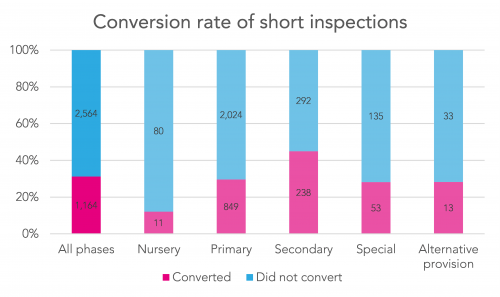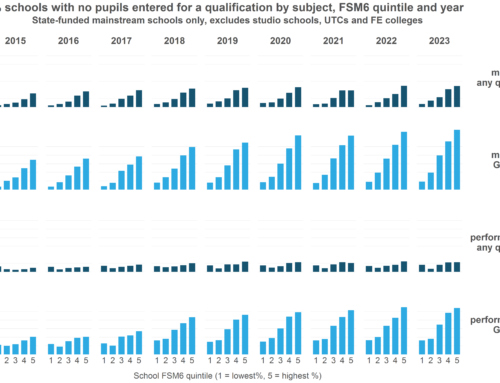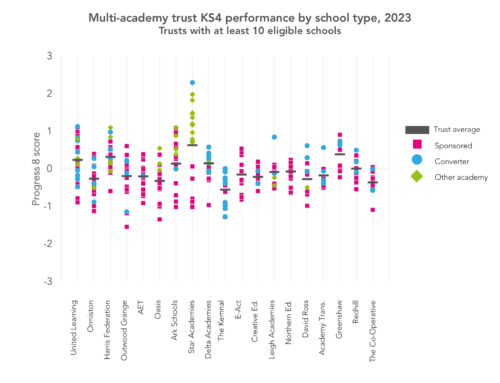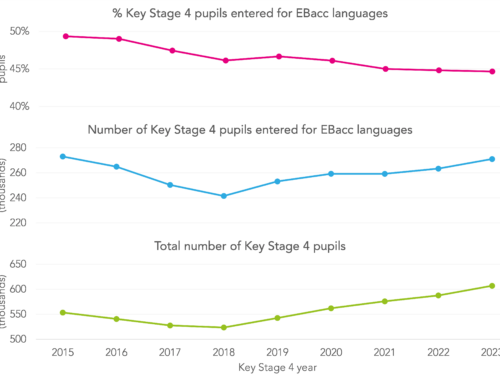Ofsted yesterday announced its response to the consultation it ran this summer on its short inspections policy.
The inspectorate had proposed extending from 48 hours, to 15 days, the window in which a full inspection must take place after a short inspection converts.
But it has now opened another consultation [PDF] that proposes that from spring term 2018[1]:
- if a school is judged to be inadequate in one or more of the graded judgements it would receive a full inspection within seven days (and generally within 48 hours);
- if serious safeguarding issues arise, the inspection would also convert to a full inspection;
- if the school were considered to remain good, that rating would be confirmed;
- in all other cases – where there were evidence that a rating of requires improvement, or outstanding might apply – the next inspection would be a full inspection, but that inspection would not take place immediately.
A second proposal in the original consultation – to carry out a full, section 5 inspection from the get-go in cases where Ofsted thinks that is necessary – will be adopted by the inspectorate.
What is a short inspection?
A quick reminder of what a short inspection is.
Schools previously rated good receive a short inspection roughly every three years, with the inspection lasting just one day.
Short inspections don’t change a school’s overall effectiveness grade – rather, to date, one of three things has happened:
- the existing, good judgement is confirmed; or
- if there is insufficient evidence for the inspector(s) to satisfy themselves that the school remains good, or if there are concerns about this, the inspection converts to a section 5 inspection; or
- if there is evidence to suggest that the school might be outstanding, the inspection again converts to a section 5 inspection.
The inspection also converts to a section 5 inspection where there are safeguarding concerns.
Also subject to short inspections are special schools, nursery schools and alternative provision that have outstanding ratings.
What does the new plan mean?
So what do the new plans mean in practice?
When we looked at the policy at the start of the summer, based on the first 18 months of operation, a little less than one in three – 31% – short inspections converted to a full inspection, with the rate varying by school phase. Though, as the Association of School and College Leaders’ Steve Rollett has noted, this rate seems to have reduced in more recent months.
So in many ways the most significant change announced yesterday is the confirmation that some good schools will receive a full section 5 inspection from the get-go.
Ofsted says that in about 20% of cases [PDF] its risk assessment processes tell it that good schools would be considered highly likely to convert to a full inspection.
If we make the slightly optimistic assumption that Ofsted is able to identify schools for whom the inspection would have converted with full accuracy, around 700 fewer short inspections would have been carried out in the initial 18 months of the policy, and the rate of conversion from a short inspection to a full inspection would drop from around 30% to nearer 10%. The total number of good schools that would have seen a short inspection convert to a full inspection in the 18 month period looked at would have dropped from around 1,100 to more like 400[2].
And of those inspections that convert, some remain as good.
So it’s worth bearing in mind that the effect of Ofsted’s new proposals on schools on the cusp of changing to a requires improvement, or an outstanding, grade – while important – are going to affect relatively small numbers of schools in any given year.
Are the new proposals a good idea?
Notwithstanding that, are the new proposals announced yesterday a step in the right direction?
Some quick thoughts.
Firstly, the changes potentially complicate the current four-tier system of inspection grading.
A lot will hang on Ofsted’s messaging to schools that can’t be confirmed as good: whether the letters it sends out will emphasise that there has not yet been a formal judgement that the schools is anything less than good, or whether they effectively introduce a new tier of good-ish (a term hit on by Nick Brook at the NAHT).
And if it is the latter, the sector, and Ofsted, will have to decide whether that’s a price worth paying for the reduced pressure that a move away from quick-fire re-inspection will bring.
Secondly, schools that inspectors think might have deteriorated to requires improvement will now receive a full section 5 inspection five to six years after their previous full inspection, or short inspection that resulted in a good judgement.
Ofsted says that this will generally be within one or two years of the new short inspection having taken place [PDF], though presumably it will be more like three years in some cases.
Ofsted is framing this as giving schools where standards may be slipping some time to improve, though it’s interesting to wonder how much this might equally be being done to manage resource constraints at the inspectorate.
And for schools where there is some evidence that standards have improved to outstanding, conversion will again not happen immediately – under the proposals, the school will just undergo a full section 5 inspection at a time to be determined by the relevant Ofsted regional director to determine, though typically within two years, and potentially “much sooner” according to the consultation document [PDF].
Schools on their way to becoming outstanding could therefore be seen as a loser under the new proposals, as they will have to wait longer to receive this external validation of their achievements – though they will retain their right to request a full section 5 inspection.
The new proposals do raise one final question – about what the value of short inspection is.
In our view there is still an open question over whether this form of short inspection gives different answers to those which a more data-led approach would give.
Want to stay up-to-date with the latest research from Education Datalab? Sign up to our mailing list to get notifications about new blogposts, or to receive our half-termly newsletter.
1. Interim arrangements will apply in the latter half of this term [PDF].
2. There would also still have been a small number of inspections that started out from an outstanding rating that converted.







Leave A Comment